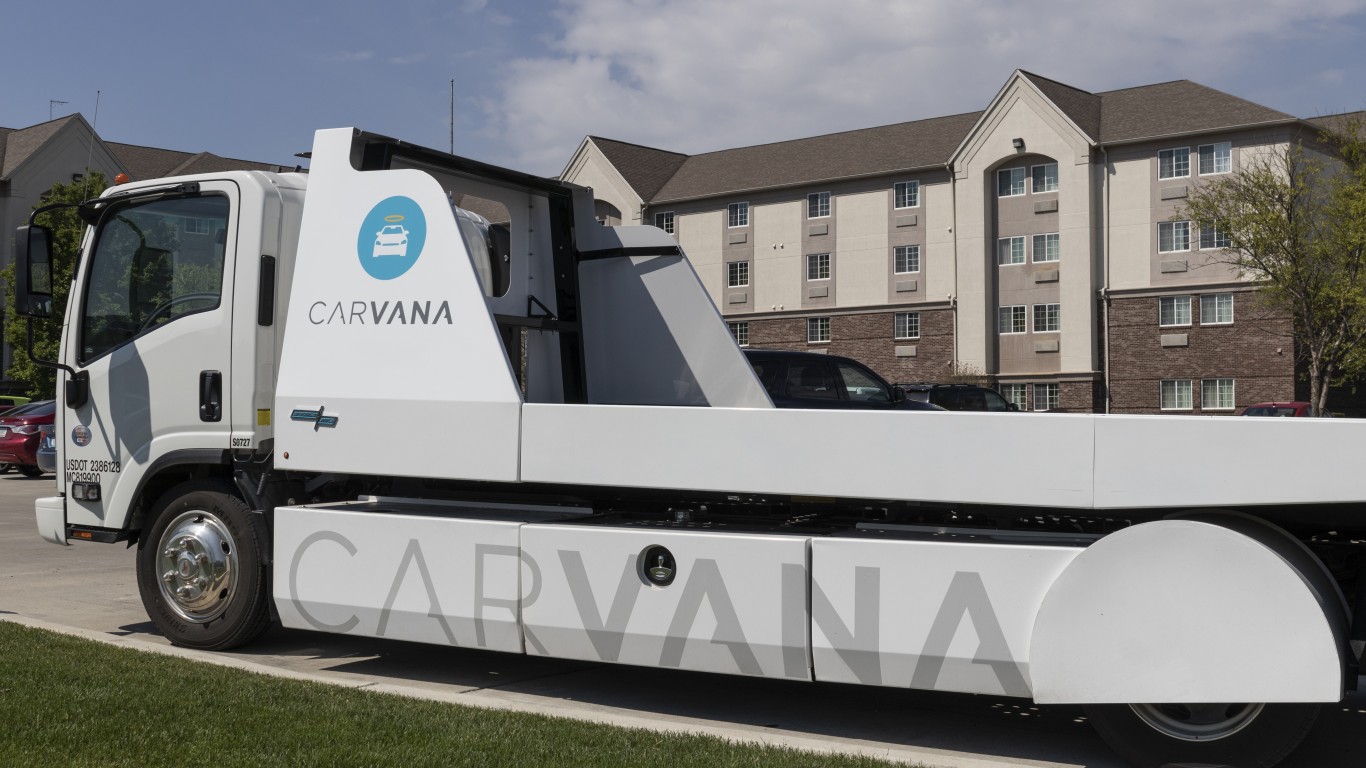
Carvana, the online used car company, was once considered the wave of the future for used car sales. People could sell the public corporation their cars. The cars were resold and delivered to buyers. Or those buyers could go to multi-story vending machines for pick up. This worked well until used car prices began to collapse, and Carvana management discovered they had built too much capacity.
Carvana has nothing to show shareholders besides a faltering model that rapidly drove its stock prices down. New financing to keep it afloat could push the price down further.
Carvana plans to sell $479 million in junk bonds backed by subprime car loans. Carvana is also doing a debt swap to bring another $1 billion. Subprime car loans have started to default in high numbers, so lenders must make an educated guess about how many of these loans will be paid to maturity.
Carvana’s management decisions have shredded the stock. It has dropped 88% in the last year to $6.94. If it drops below $5, it will be considered a penny stock.
Carvana is about to announce earnings. Investors need to hope that these numbers will surprise them on the high side. In the most recent quarter, units sold dropped 23% to 86,997 year over the previous year. Revenue dropped 24% to $2.84 billion based on the same period. The company lost $1.4 billion, And based on its balance sheet, Carvana was almost out of cash.
Carvana management also missed the fact that it has an army of competition. At the top of this are Cars.com, CarMax, Vroom, and Shift. Beyond that, there are thousands of new and used auto dealerships, each allowing people to look at the cars they plan to buy and take delivery immediately.
Carvana made too many mistakes. Other than layoffs, which it has already done, it can only shrink further. As its footprint becomes smaller, so does its ability to compete.
Here are 15 cars that cost more used than new.
The Average American Has No Idea How Much Money You Can Make Today (Sponsor)
The last few years made people forget how much banks and CD’s can pay. Meanwhile, interest rates have spiked and many can afford to pay you much more, but most are keeping yields low and hoping you won’t notice.
But there is good news. To win qualified customers, some accounts are paying almost 10x the national average! That’s an incredible way to keep your money safe and earn more at the same time. Our top pick for high yield savings accounts includes other benefits as well. You can earn up to 3.80% with a Checking & Savings Account today Sign up and get up to $300 with direct deposit. No account fees. FDIC Insured.
Click here to see how much more you could be earning on your savings today. It takes just a few minutes to open an account to make your money work for you.
Our top pick for high yield savings accounts includes other benefits as well. You can earn up to 4.00% with a Checking & Savings Account from Sofi. Sign up and get up to $300 with direct deposit. No account fees. FDIC Insured.
Thank you for reading! Have some feedback for us?
Contact the 24/7 Wall St. editorial team.




